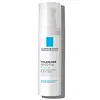What's inside
What's inside
 Key Ingredients
Key Ingredients

 Benefits
Benefits

 Concerns
Concerns

No concerns
 Ingredients Side-by-side
Ingredients Side-by-side

Water
Skin ConditioningCaprylic/Capric Triglyceride
MaskingCetearyl Ethylhexanoate
EmollientSqualane
EmollientPropanediol
SolventCocos Nucifera Oil
MaskingCetearyl Isononanoate
EmollientCetearyl Alcohol
EmollientArachidyl Alcohol
EmollientDipalmitoyl Hydroxyproline
Skin ConditioningBehenyl Alcohol
EmollientCetearyl Glucoside
EmulsifyingArachidyl Glucoside
EmulsifyingPEG-100 Stearate
Glyceryl Stearate
EmollientGlycine Soja Sterols
EmollientAscorbyl Tetraisopalmitate
AntioxidantRetinol
Skin ConditioningPolyacrylamide
C13-14 Isoparaffin
EmollientCaprylyl Glycol
EmollientTriethanolamine
BufferingChlorphenesin
AntimicrobialPhenoxyethanol
PreservativeDisodium EDTA
Laureth-7
EmulsifyingPolymethyl Methacrylate
Tricaprylin
MaskingParfum
MaskingLinalool
PerfumingLimonene
PerfumingHexyl Cinnamal
PerfumingHydroxycitronellal
PerfumingBHT
AntioxidantWater, Caprylic/Capric Triglyceride, Cetearyl Ethylhexanoate, Squalane, Propanediol, Cocos Nucifera Oil, Cetearyl Isononanoate, Cetearyl Alcohol, Arachidyl Alcohol, Dipalmitoyl Hydroxyproline, Behenyl Alcohol, Cetearyl Glucoside, Arachidyl Glucoside, PEG-100 Stearate, Glyceryl Stearate, Glycine Soja Sterols, Ascorbyl Tetraisopalmitate, Retinol, Polyacrylamide, C13-14 Isoparaffin, Caprylyl Glycol, Triethanolamine, Chlorphenesin, Phenoxyethanol, Disodium EDTA, Laureth-7, Polymethyl Methacrylate, Tricaprylin, Parfum, Linalool, Limonene, Hexyl Cinnamal, Hydroxycitronellal, BHT
 Reviews
Reviews

Ingredients Explained
These ingredients are found in both products.
Ingredients higher up in an ingredient list are typically present in a larger amount.
This ingredient is an emollient, solvent, and texture enhancer. It is considered a skin-softener by helping the skin prevent moisture loss.
It helps thicken a product's formula and makes it easier to spread by dissolving clumping compounds.
Caprylic Triglyceride is made by combining glycerin with coconut oil, forming a clear liquid.
While there is an assumption Caprylic Triglyceride can clog pores due to it being derived from coconut oil, there is no research supporting this.
Learn more about Caprylic/Capric TriglycerideCaprylyl Glycol is a humectant and emollient, meaning it attracts and preserves moisture.
It is a common ingredient in many products, especially those designed to hydrate skin. The primary benefits are retaining moisture, skin softening, and promoting a healthy skin barrier.
Though Caprylyl Glycol is an alcohol derived from fatty acids, it is not the kind that can dry out skin.
This ingredient is also used as a preservative to extend the life of products. It has slight antimicrobial properties.
Learn more about Caprylyl GlycolPropanediol is an all-star ingredient. It softens, hydrates, and smooths the skin.
It’s often used to:
Propanediol is not likely to cause sensitivity and considered safe to use. It is derived from corn or petroleum with a clear color and no scent.
Learn more about PropanediolWater. It's the most common cosmetic ingredient of all. You'll usually see it at the top of ingredient lists, meaning that it makes up the largest part of the product.
So why is it so popular? Water most often acts as a solvent - this means that it helps dissolve other ingredients into the formulation.
You'll also recognize water as that liquid we all need to stay alive. If you see this, drink a glass of water. Stay hydrated!
Learn more about Water